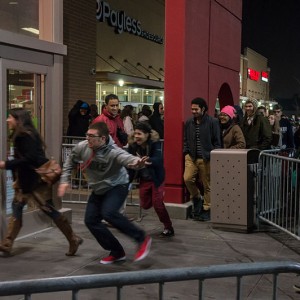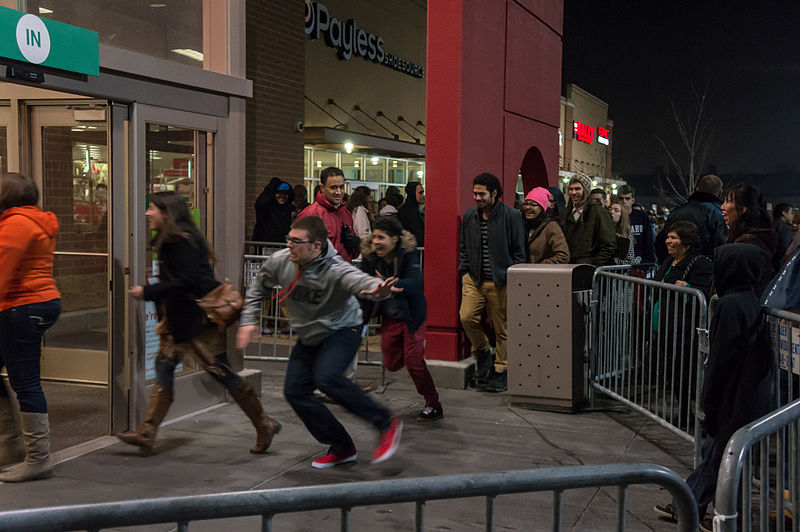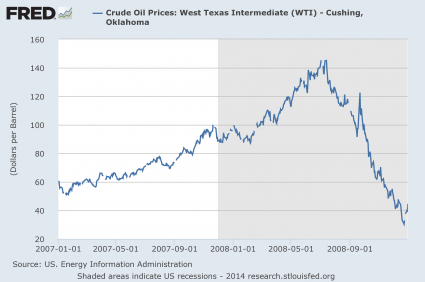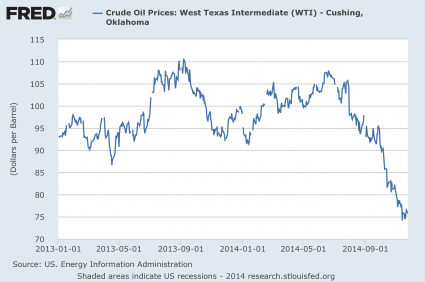 Americans are going to spend more than 600 billion dollars this Christmas season, and on Friday we got to see our fellow citizens fight each other like rabid animals over foreign-made flat screen televisions and Barbie dolls. As disgusting as this behavior is to many of us, there may soon come a time when we will all fondly remember these days. Most Americans are completely unaware of what is currently happening in the financial world, but right now there are deeply troubling signs that we could be on the verge of another major global financial collapse. If the next great economic downturn does strike in 2015, that could mean that we may have just witnessed the last great Black Friday celebration of American materialism. As you read this, stock prices are approximately double the value that they should be, margin debt is hovering near all-time record highs, and the “too big to fail” banks are being far more reckless than they were just prior to the last major stock market implosion. So many of the exact same patterns that we witnessed back in 2007 and 2008 are repeating right now, and as you will see below, this includes a horrifying crash in the price of oil. Anyone with half a brain should be able to see the slow-motion financial train wreck that is unfolding right before our eyes.
Americans are going to spend more than 600 billion dollars this Christmas season, and on Friday we got to see our fellow citizens fight each other like rabid animals over foreign-made flat screen televisions and Barbie dolls. As disgusting as this behavior is to many of us, there may soon come a time when we will all fondly remember these days. Most Americans are completely unaware of what is currently happening in the financial world, but right now there are deeply troubling signs that we could be on the verge of another major global financial collapse. If the next great economic downturn does strike in 2015, that could mean that we may have just witnessed the last great Black Friday celebration of American materialism. As you read this, stock prices are approximately double the value that they should be, margin debt is hovering near all-time record highs, and the “too big to fail” banks are being far more reckless than they were just prior to the last major stock market implosion. So many of the exact same patterns that we witnessed back in 2007 and 2008 are repeating right now, and as you will see below, this includes a horrifying crash in the price of oil. Anyone with half a brain should be able to see the slow-motion financial train wreck that is unfolding right before our eyes.
Every year, it has been my tradition to write an article about the mini-riots that erupt in retail stores all around the country on Black Friday. This year things were a bit calmer because so many stores opened up on Thanksgiving itself, but there was still plenty of chaos. For example, in the video posted below you can see women viciously fighting one another over discounted lingerie and underwear…
But instead of launching into another diatribe about how we are committing national economic suicide by buying hundreds of billions of dollars of foreign-made goods with money that we do not have, I want to focus on what is coming next.
You see, I believe that in the not too distant future many of us will be wishing for the days when the debt-fueled U.S. economy was healthy enough for people to be wrestling with one another on the floor over good deals in our retail establishments.
The next great financial crash (which many have been anticipating for years) is rapidly approaching. So many of the same things that happened last time are happening again. As I noted above, this includes a crash in the price of oil.
In the months prior to the last stock market collapse, the price of oil began plummeting dramatically in the summer of 2008. This was an “early warning signal” that something was deeply amiss in the financial world…
Many people assume that a lower price for oil is good for the economy, but the exact opposite is actually true. The oil industry has become absolutely critical to the U.S. and Canadian economies. And in recent years, the “shale oil boom” has been one of the only bright spots for the United States. If the shale oil industry starts to fail because of lower prices, a lot of the boom areas all over the nation are going to go bust really quickly and a lot of the financial institutions that were backing these projects are going to feel an immense amount of pain.
Unfortunately for us, the “shale oil revolution” simply does not work at 80 dollars a barrel.
And it certainly does not work at 70 dollars a barrel.
As I write this, U.S. crude is sitting at about 66 dollars a barrel due to OPEC’s recent decision to not cut output.
That is the lowest price for U.S. crude since September 2009.
So just like we saw during the summer of 2008, crude oil prices are collapsing once again. The chart below comes from the Federal Reserve, but it is a few days out of date. Now that the price of crude is down to about 66 dollars, you have to imagine the price actually going below the bottom of this chart…
Needless to say, this price collapse is having a huge impact on the stock prices of oil companies. The following information about what happened in the markets on Friday comes from Business Insider…
Here were some of the biggest losers on Friday:
- BP (BP), down 5%
- Royal Dutch Shell (RDS.A), down 6%
- Total (TOT), down 5%
- Statoil (STO), down 14%
- Exxon Mobil (XOM), down 5%
- ConocoPhillips (COP), down 9%
- Marathon Oil (MRO), down 13%
- Occidental Petroleum (OXY), down 7%
- Anadarko Petroleum (APC), down 14%
- Linn Energy (LINE), down 13%
- Whiting Petroleum (WLL), down 28%
- Oasis Petroleum (OAS), down 32%
- Kodiak Oil & Gas (KOG), down 28%
And this list goes on.
But this could just be the beginning of the oil price declines.
The most powerful oil official in Russia believes that the price of oil could fall below $60 next year…
Russia’s most powerful oil official Igor Sechin said in an interview with an Austrian newspaper that oil prices could fall below $60 by mid-way through next year.
Sechin, chief executive of Rosneft, Russia’s largest oil producer, also said U.S. oil production would fall after 2025 and that an oil market council should be created to monitor prices, the same day the OPEC cartel met in Vienna and left its output targets unchanged.
“We expect that a fall in the price to $60 and below is possible, but only during the first half, or rather by the end of the first half (of next year),” Sechin told the Die Presse newspaper.
And one oil industry analyst just told CNBC that he believes that the price of oil could ultimately plunge as low as $35 a barrel…
“When you look at the second half of 2015, that’s when you see oil beginning to dwarf demand by about a million, a million and a half barrels a day,” he said. “Thirty-five dollars is a possibility if they don’t get an agreement next spring because that’s when the oil really starts to build and you can have a billion barrels of oil with really no place to put it.”
This comes at a time when there are already a whole host of signs that the global economy is slowing down. Three of the ten largest economies on the planet have already slipped into recession, and the economic nightmare over in Europe just continues to get even worse. In fact, we just learned that the unemployment rate in Italy has shot above 13 percent for the first time ever recorded.
In addition, it is important to remember that the “real economy” in the United States is in far worse shape than it was just prior to the last financial crash. Just consider these numbers…
-In the United States today, the number of payday lending locations is greater than the number of McDonald’s and the number of Starbucks.
-One recent survey found that about 22 percent of all Americans have had to turn to a church food panty for assistance.
-This year, almost one out of every five households in the United States celebrated Thanksgiving on food stamps.
-The rate of government dependence in America is at an all-time high and approximately 60 percent of U.S. households get more in transfer payments from the government than they pay in taxes.
-According to a report that was just released by the National Center on Family Homelessness, the number of homeless children in the U.S. has soared to a new all-time record high of 2.5 million.
If things are this bad now, what are they going to look like after the next great financial crash?
And without a doubt, the next crash is coming. Hopefully we have at least a couple more months of relative stability, but many experts are now urgently warning that time is quickly running out.
By this time next year, Black Friday may look a whole lot different than it does today.










